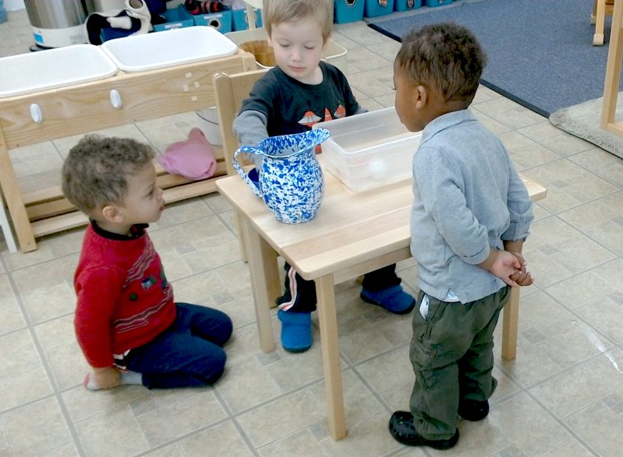Grace and Courtesy In the Montessori Classroom
Grace and Courtesy In the Montessori Classroom
By Terro Orenchuk, Children´s House Teacher
In a world where there is often an absence of the awareness of others and their needs, one might wonder what has happened in our society. Grace and courtesy are the polite treatment of others and the proper expression of one’s feelings. There was a time when politeness and the voicing of one’s feelings and opinions were done in a respectful way in order to acknowledge the other person’s dignity as a fellow human being. In 2020, this is hard to observe and is often lacking in our culture and educational systems.
In a Montessori classroom, grace and courtesy is noticeably present and can often cause a visitor to pause and watch in awe as the children move and interact with each other in a peaceful, respectful manner. Words like, “Yes, please, no thank you, excuse me, can I help you, may I have a presentation, may I be excused,” and so on are regularly heard in a Montessori environment. Lessons in grace and courtesy are one of the hallmarks of this philosophy of education.
Grace and courtesy lessons are taught generally at the beginning of the school year and as needed throughout the year. The teacher models a particular skill by role-playing it with the children in whole or small group lessons. The children then have the opportunity to practice and in a short period of time, they are living these basic life skills.
In a Montessori classroom, there is a harmonious, peaceful hum to the room as the children go about their day learning and growing within their community. They are taught to push in their chairs, make an activity or work (Montessori materials) ready for the next person, sweep up their spills, close the door quietly, hold the door open for the next person, wait for their turn to speak, and speak in a soft voice so as not to disturb another’s work. In addition, the mixed age groupings in a Montessori class are very advantageous for the children to not only learn these skills, but to also practice teaching them to their younger classmates. The children understand that the environment belongs to everyone and most importantly there is a mutual respect for each other. This can be seen even when there is a disagreement. Children are taught to express themselves by stating how they feel and to then offer a solution for how to solve problems. They use words such as, “I don’t like when you do that. Please stop” or “That makes me feel sad when you touch my work.” The children then can discuss how to resolve the situation by apologizing or finding an alternative so that everyone is respected and treated kindly. In the words of Maria Montessori, “The children no longer act thoughtlessly, but put the group first and try to succeed for its benefit.”
It’s very hopeful to witness the way children in a Montessori classroom so naturally consider those around them and work together to create a peaceful classroom. It is through this philosophy of education that children can learn the skills they need to grow and develop into productive citizens. In the words of Dr. Maria Montessori, “Education is the best weapon for peace.”


